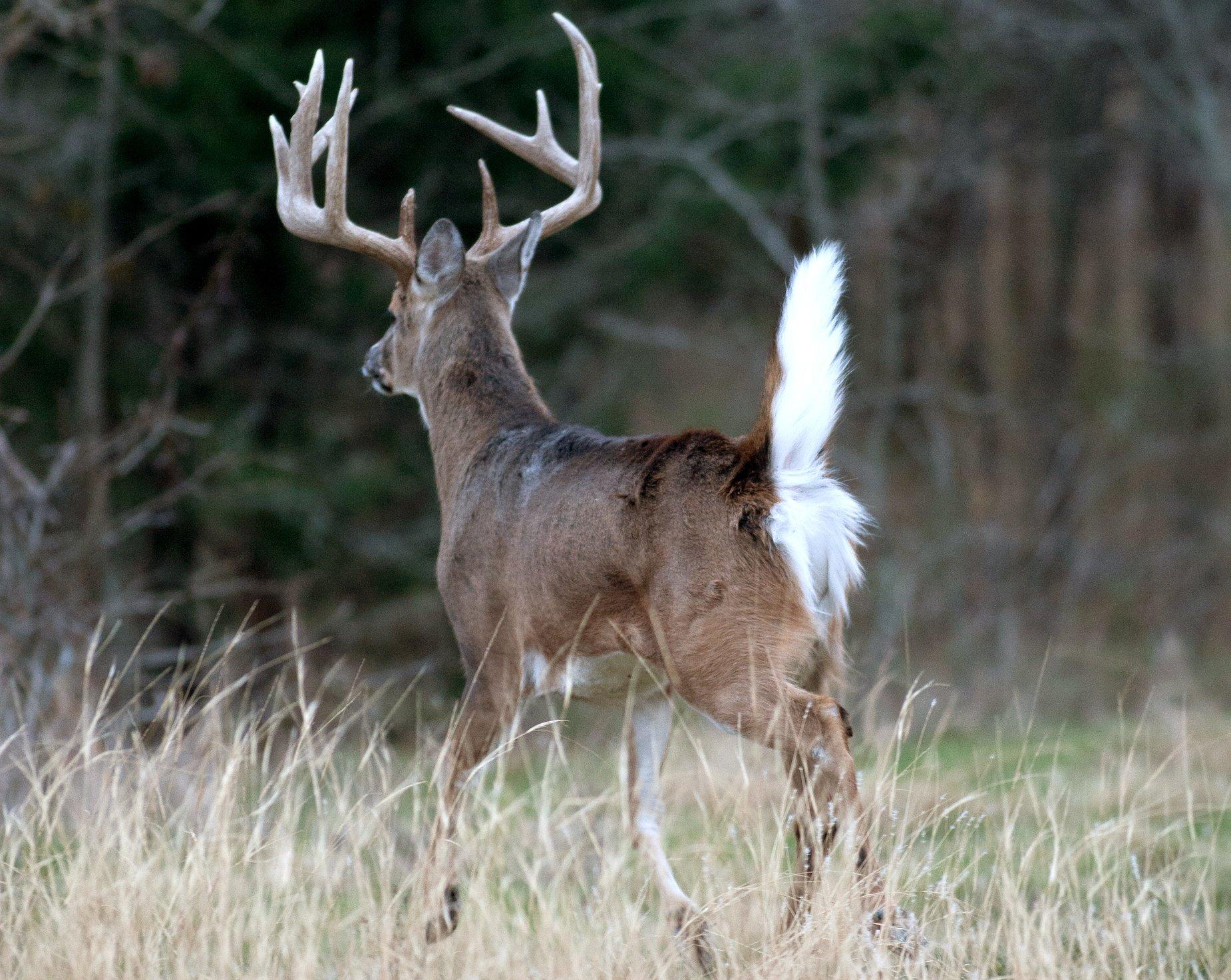Pinpointing lines of movement and intercepting bucks there is the best approach
Deer hunting is all about tactics… and there are plenty of those to choose from. Here are two: Hunt aggressively, near bedding areas, or be reserved and sit over food sources. But there’s a third option: Do neither. Find the sweet spot between bedding cover and food, and set up there. That plan gives you a great chance for a shot in daylight, but also minimizing the risk of spooking deer while walking to and from your stand.

In some ways, hunting food sources is nearly as risky as hunting closer to bedding areas. Image by Russell Graves
WHY BEDDING AREAS ARE RISKY
Hunting closer to bedding areas can be a great tactic that increases the odds of seeing deer during daylight hours, especially in areas with heavy hunting pressure. But it comes with increased risk of alerting deer.
For morning hunts, unless a hunter gets to the bedding area several hours before daylight while deer are still closer to food sources, the chances of alerting them are quite high. But in the evening, it’s virtually impossible to approach bedding areas without spooking deer.
WHY FOOD SOURCES ARE RISKY, TOO
Some believe that hunting over food is a safer, more reserved tactical approach than hunting bedding areas. But it can be just as risky, especially in the evenings. It’s no trouble to slip into the stand around lunchtime without bumping deer, but getting out of the stand while deer are chowing down in front of you can be problematic. Without foolproof access routes, the departure alerts deer to your presence.
THE SOLUTION: HUNT TRANSITION AREAS
Hunters have brainstormed ways to get into and out of high-pressure areas — like bedding areas and food sources — for a long time. Using creative entry and exit routes might involve walking ditches, drainages, shallow waterways, along cornfield edges, behind planted Egyptian wheat walls, through very thick cover (where deer aren’t bedding), and more. Getting out is equally important and has led hunters to leave stands early, walk with a 2D decoy as cover, call someone with a truck or tractor to pick them up, bark like a dog to push deer, wait minutes or hours until deer leave, and more. These are great tips and certainly have their places. But there’s a literal path that makes these options moot — transition routes.
“Last season we killed our top three deer on the property — 163, 174, and 176 — by hunting only in the transition areas,” said Realtree ambassador Kyle Barefield. “We totally stayed away from their destination fields where they fed and the thickets where they bed.”
Obviously, the implementation of this tactic requires a complete understanding of where deer bed, feed, and how they travel from A to B. Hunters must know where to set up along transition routes. There’s minimal room for error.
Still, once a hunter has the necessary information, it’s go-time. The best part is that odds of spooking deer before, after, or even during the hunt are much lower than when hunting either bedding areas and food sources. Hunting the bedroom and dinner table still have their places. But the safest bet is always somewhere in between — and often, that’s the best bet, too.
Don’t Miss: DO BIG BUCKS FATHER MORE BIG BUCKS?










